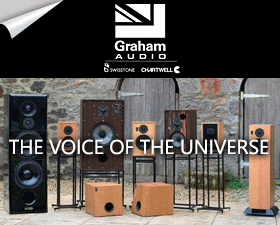It's well know from researches that speakers that are correct and with a well behaved power response are preferrred. But of course that's when testet blindly. Sighted tests don't always speak the truth and bias come into place.
A polar response is seldom published and never by these so called "high-end" brands. And no wonder why; they would reveal an ugly truth. However, the combination of on-axis and off-axis measurements do show a great deal and is also what a polar response is made up of.
http://seanolive.blogspot.no/2009/04/dishonesty-of-sighted-audio-product.html
Here's Verity Audio Sarastro II measured:
http://www.stereophile.com/content/verity-audio-sarastro-ii-loudspeaker-measurements
Despite not being a speaker designer, I don't think I would have much trouble producing a better speaker then the Sarastro II for a fraction of the price. Whether a reviewer would prefer it in sighted test, is however doubtful looking at their listening performance.
View attachment 15243
As a complement to the Sarastro II review published in Stereophile, we invite you the read Verity's manufacturer's comments that were published in the same magazine. As they are not available on the web, please read them here:
"Manufacturer’s Comment : Verity Audio Sarastro II
Stereophile Magazine, April 2009
Editor:
We thank Fred Kaplan and John Atkinson for their time and effort in evaluating our Sarastro II loudspeaker system. It was with great pleasure we shared in Fred’s enthusiasm as he extolled the many virtues that make the Sarastro II something truly special: its natural rendering of instruments and harmonic overtones; its strength in conveying dynamic contrasts and ambient space; its ability to properly address the size and scale of individual sounds/performers and the space in which they reside; and overall, the Sarastro II’s ability to deliver “music as a whole” with “sheer, unfatiguing pleasure”. We take Fred’s overall assessment as a very affirmative confirmation our company’s primary, and most important, goals have been achieved.
We thank John for his thorough measurements, however we think we may never quite see eye-to-eye in these matters. John suspected a number of our design decisions caused idiosyncratic measured behavior, and this lead him to believe measurement is not an aspect actively pursued in the design process at Verity Audio.
We are a company of musicians, music aficionados, and engineers. We’ve worked on loudspeaker design professionally since the late-1980’s, and as the principals of Verity Audio for the past 15 years; we each have experience with acoustics going back even further. We have familiarized ourselves with quite a few pieces of measurement and simulation software, and like John, the MLSSA system has been our preferred loudspeaker measurement tool.
We would like to emphasize, contrary to John’s conclusion, that all Verity Audio loudspeakers are first computer modeled/simulated, then built and measured, re-optimized, and finally fine-tuned through a sequence of listening sessions and measurements until the final performance goal is reached. Throughout our years of research, we have developed and tested methodologies that are unique, but repeatable. All said, all design choices at Verity Audio have specific justifications and are not pure coincidence.
Establishing a linear correlation between measurements and the perceived performance is a very critical matter; however while we believe measurements are essential, they shouldn’t exclusively, or ultimately, be used as irrefutable judgment of sonic performance. Our brain processes music as a unique whole, and in the case of music reproduced in the home, what is perceived is the summation of the loudspeaker’s acoustical attributes in a given acoustical environment. This makes designing loudspeakers a complex science where finding the right balance between what is generally accepted and established, and what can be applied from years of experience and experimentation, extremely critical. As an example, we have made a conscious decision to use our midrange units over a much wider bandwidth than would normally be allowed by convention, because this design decision has proved to offer many more virtues (better liveliness, continuity, and harmonic integrity) than simply trying to keep its dispersion even off-axis.
In designing a loudspeaker, an amplifier, etc. there are no perfect solutions, only different sets of compromises. Without explicit knowledge of what a designer’s goal is, or what research and justification lead to a design decision that consciously breaks with convention, we believe it is difficult to properly apply a standard set of measurements to ultimately judge a product’s success. We’ve made a choice to place the overall sonic performance of our loudspeakers at the very pinnacle of our design goal. While our end result is unique in some ways, what is largely recognized as standard practice in loudspeaker design has been extensively tested and is still used in the early stages of our design process. We do believe a properly trained engineer is normally able to achieve good results using the standard loudspeaker design methodologies, however we believe our customers deserve something more. For more information and explanation of our design philosophy, please visit our website.
In closing, we very much appreciate the fact John noted we’ve paid close attention to the overall sound of the Sarastro II- shouldn’t this be what matters most? In addition to challenging the conventions of generally accepted loudspeaker design, we do not hesitate to challenge our own designs continually, and this is what the Sarastro II is all about. Our primary design goal is to allow our customers to enjoy music, reproduced faithfully, and for many years without fatigue. Fred’s experience with the Sarastro II leads us to think we’ve succeeded, in spades. Thanks again for a wonderful review.
Bruno Bouchard, Julien Pelchat, and John Quick
Verity Audio"
















